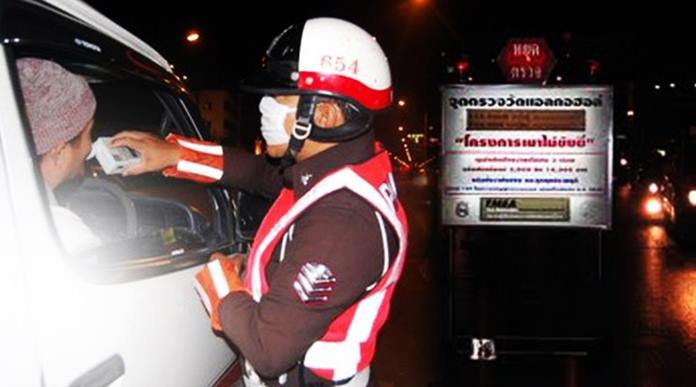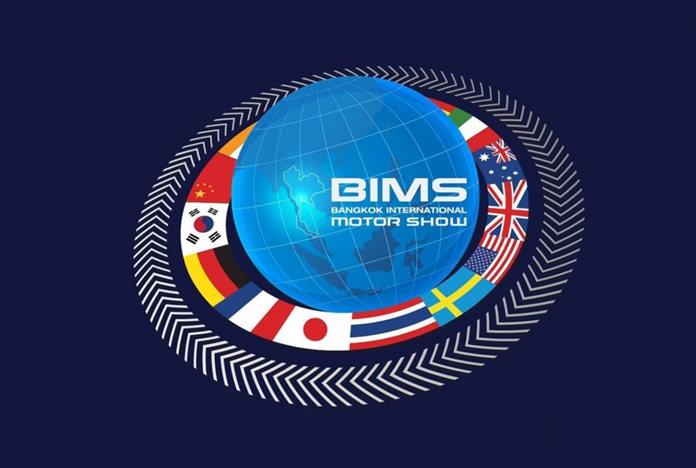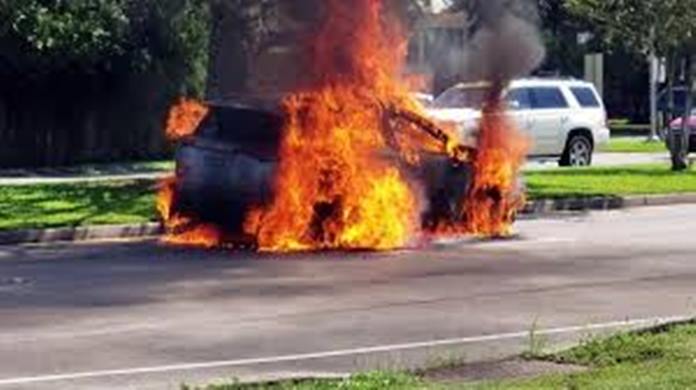
Not only are you tip-toeing along our streets, preparing for the next police check, the Land Transport Department plans to discuss harsher punishment on drunk drivers following a directive from a deputy prime minister.
Chirute Visalachitra, director-general of the department, said he would discuss the issue with the police, judicial authorities and the civil sector. Chirute responded to Deputy Prime Minister/Public Health Minister Anutin Charnvirakul who posted on his Facebook account that he wanted the department to revoke driving licenses of drunk and reckless drivers.
According to the director-general, the licenses of public transport drivers will be revoked after they repeated their driving offences. For the wrongdoing of private vehicle drivers, a concerned court will decide on punishment depending on the nature of their offences.
Chirute also said that his department was merging the land transport law with the vehicle law. The new law would certainly include harsher punishment on drunk and reckless drivers but the punishment changes through the new legislation would take time. (TNA)
This could not really be called Draconian, as in some Scandinavian countries you can lose your car. In Sweden, the amount of your fine depends on how much money you have in the bank, which can be a good or terrible thing. The DUI laws in Sweden are among the toughest in the world. The variable fine seems like a fair deal for individuals with a small balance in their bank accounts. However, people with high balances can get outrageously high fines. For example, one DUI convict had to pay a penalty of $21,000.
South Africa also has strict DUI laws and rightfully so. The country sees over 45 percent of all unnatural deaths result from drinking and driving. While offenders face penalties similar to those of the United States (such as license suspension and monetary punishments), they also risk spending up to six years in jail. In Costa Rica, El Salvador and France, your car can get confiscated if you get a DUI.
The police in these countries have the right to seize the cars of drunk drivers. Authorities may even sell impounded vehicles rather than returning them to the owners.
Of course, none of the countries mentioned above require you to have a “Blue Book”! And report in every 90 days.
The ‘green’ disease
We are all going mad (other than me). One corporation to join the ‘green’ movement was Bridgestone, which proudly announced that the grooves in the F1 race tyres would be green. Were they pulling my leg? And yours? I suppose it was biodegradable paint.
The official stance was provided by Bridgestone, saying, “We hope that the launch of the ‘Make Cars Green’ tyre will draw public attention to the many environmental initiatives in and around Formula One,” explained Bridgestone’s then CEO Shoshi Arakawa. “Environmental preservation is at the center of our work at the Bridgestone Group and we hope that this collaboration with the FIA will help to spread this ethos worldwide.”

“New rule changes, alongside the support for awareness-raising initiatives such as the ‘Make Cars Green’ campaign, will change the face of motor sport and place it at the very heart of environmental developments in the automotive sector,” explained Max Mosley, then President of the FIA, Formula One racing’s governing body. He’s pulling our legs too.
The world has entered this ‘guilt’ phase. As Chicken Little said, “The sky is falling” (through the hole in the ozone layer), but “I’m not to blame! It’s the other polluters! I’m green.” So we have the ludicrous situation of Honda claiming that its F1 cars were promoting green technology and now Bridgestone with its green tyres. Total fatuous nonsense.
When you sit down and think about it rationally, just how much does F1 affect the polar ice caps? The words ‘bugger’ and ‘all’ seem to leap into the forefront of my mind. Particularly when you contrast the two days of running every fortnight against the 24 hours of baht buses all day and every day in Thailand.
Give us a break! Give us good clean racing with plenty of passing, and forget the green rubbish. Leave that for governments (and Honda and Bridgestone).
Motor Show time again
March 25 to April 5 are the public days for the Bangkok International Motor Show this year. I am unsure of the numbers or makes, but as it is the number 1 show in Thailand, I am sure it will once more be very well attended.

Of course, will there be any Chevrolet models, after Chevrolet sold out to the Chinese Great Wall and making 1,500 workers redundant? By the way, this pulling out was not something decided upon at the last minute as Chevrolet (General Motors) also pulled out from Australia at the same time, where they had been trading as General Motors Holden (GMH). Again, this was no shock as GMH had stopped manufacturing Holdens in 2017, and were filling the dealerships with re-badged Daewoo’s called “Holdens”.
The average Chevrolet owner in Thailand is, of course, less than impressed, with 50,000 THB off the top of their car’s value and now with an orphan in their garage.
Government sources say that the Rayong plant will manufacture EV’s with the long range plan being to make Thailand the center of EV production in this area. Will Great Wall’s EVs re-employ the 1,500 redundant workers?
Cremation ceremonies for the Toyota Prius
In an interesting press release from Toyota a few years back, the company outlined the cremation for the new Prius. Long before the first new Prius reached the showroom, Toyota had plans in place to ensure that when the car reaches the end of its useful life it can be disposed of in an environmentally responsible fashion.
When its driving duties are done, more than 85 percent of new Priuses can be recycled and more than 95 percent of its materials can be recovered in a process that only accounts for a tiny proportion (approximately two percent) of its full lifecycle CO2 emissions.
Special attention has been paid to the efficient recycling of new Priuses high voltage nickel-metalhydride battery with a new process that allows 95 percent of the battery components to be recovered for re-use with near-zero emissions.

At the vehicle’s end-of-life, the battery is removed at an authorized Prius service centre. Toyota has appointed authorized waste management companies in each country where the car is sold, which are responsible for transporting the batteries to one of three European Final Treatment Companies (FTCs): SNAP, Accurec and Umicore.
The recovery process begins with the removal of the battery’s outer casing, which itself can be re-used in steel making processes. All the wires and electronic parts are sent to a specialist recovery company, while the power cells themselves are recycled using an induction-based vacuum thermal system.
This is an evolution of the traditional waste heat treatment process, but it consumes less energy, is almost emissions-free and is highly secure. The cells are put into a sealed container from which all air is removed, significantly reducing internal pressure. The container is then heated to 800° C. When the temperature reaches 400° C all organic materials break down into a mixture of oil and water, which is sent on to a licensed water treatment company for processing. The power cells are then exposed to hydrogen, which helps break the oxides down into metals.
What is left after the process is a highly concentrated nickel alloy which can be re-used as a raw material in the production of new batteries. All the other metallic elements recovered can be used in the manufacture of stainless or other specialist steels.
Of course, that came from Europe. Toyota hasn’t seen our recyclers here in action. Within 24 hours of being dumped, there would be nothing left. Guaranteed!
300 km/h on a Sunday afternoon
On the motorway, many of you will have driven at 160 km/h (the old 100 mph, the magic ton, before we went metric). Some of you with a better motor car will have driven at 200 km/h. If you are very brave (or perhaps foolhardy), your BMW or Mercedes may even let you experience 250 km/h, but at that speed you will be hanging on for grim death, and praying there is no slow traffic in front.
Let me now tell you what it is like at 300 km/h in a Lola T430 Formula 5000 racing car. The engine started easily and a dab on the accelerator produces a very deep growl from the engine behind your head. You know you have 550 bhp behind you.

The Hewland gearbox on a car like this has no synchromesh, and the ‘dog’ gears select with a clunk and have a rattle at idle – this is not dangerous but it is disconcerting at first.
The clutches on these race cars are not the soft pressure progressive clutches of a manual road car, and do tend to be in or out, so getting away from rest is a little tricky, but once trundling down the track you can begin to take stock of your surroundings and tentatively start driving this heavy beast with a little more throttle and some precision. At low speeds, the engine with the full race camshafts, is very “lumpy” but soon you begin to use more loud pedal and drive the car deeper into the corners. By making the front tyres bite as you turn in under brakes, you could then feed in the power to control the rears and avoid too much oversteer. With all the horsepower at your disposal, cornering is done by the right pedal, and corrections are done by the steering wheel!
You could leave the braking so late, you begin to think you will never slow down in time – but you can. In fact, sometimes I had to lift off the brake and use some throttle into the corner as I was braking far too early. The next factor is which comes to light is comfort. Race cars are built for speed, not comfort and it may require some sponge rubber to protect you from the effect of the g-forces. This is why F1 drivers wear knee pads to buffer their body from the effects of high speeds.
The next mental adjustment you have to make is for the acceleration of race cars like this. Zero to 100 km/h comes up in less than three seconds. You are no sooner out of one corner than to find the next one rushing up and it’s back on the brakes, turn in, throttle out, and then the next! By the time you are half way through one corner, you are preparing yourself mentally for the next. 300 km/h on the straight is the easiest part of the entire exercise, believe me!
 |
 |
 |





